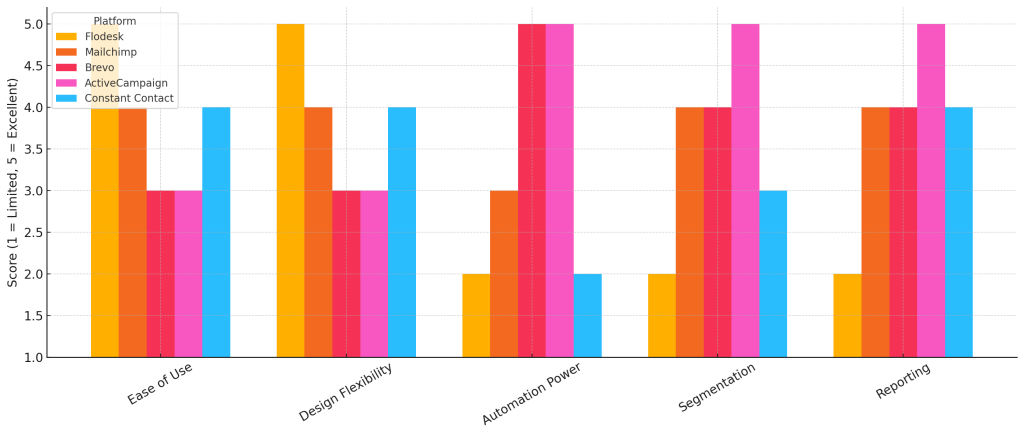There are hundreds of email marketing platforms out there and they all promise the same thing: better open rates, more automation, fewer headaches.
But when you’re running a nonprofit or small business, you don’t have time to test five different tools or get lost in feature overload. You need something that fits your team, your budget, and your actual goals.
Over the years, I’ve helped a lot of clients pick (and switch) email platforms. Here’s what I’ve learned: what works, what doesn’t, and the tools I actually recommend depending on your needs, your size, and how tech-savvy you are.
Let’s break it down.
Flodesk
My take: I want to love Flodesk. And for the right org, I do. It’s beautifully designed, super intuitive, and you don’t pay more as your list grows (rare!).
- Best for: Brands that care a lot about aesthetics—arts orgs, lifestyle brands, anyone wanting eye-catching email design with minimal effort.
- Watch out for: Light reporting and segmentation. You trade power for beauty here.
Mailchimp
My take: Mailchimp’s like the Toyota Corolla of email tools: familiar, reliable, and gets the job done. I often recommend it when a team needs basic automation and a straightforward experience.
Best for: Small orgs just getting into email marketing who want decent templates and solid deliverability.
Watch out for: Pricing can jump fast as your list grows. Automation is improving, but still feels limited for advanced workflows.
Brevo (formerly Sendinblue)
My take: If you want serious automation power on a tight budget, Brevo is worth a look. You get workflows, SMS, segmentation, and even a built-in CRM.
Best for: Small businesses or data-savvy nonprofits who want automation + affordability.
Watch out for: The interface isn’t the prettiest, and it’s not the most beginner-friendly.
ActiveCampaign
My take: If your email marketing needs to support complex donor/customer journeys, this is your platform. It’s advanced, powerful, and has one of the best automation builders around.
Best for: Organizations running capital campaigns, membership tiers, or multi-step sales funnels.
Watch out for: Setup takes time. Not a set-it-and-forget-it tool.
Constant Contact
My take: The go-to for a lot of local orgs for a reason: it’s friendly, stable, and has good support. Not flashy, but gets the job done.
Best for: Smaller teams who want email + event tools in one, and don’t need complex automations.
Watch out for: The interface feels a bit dated, and segmentation is list-based (less flexible).
In Summary
If you’re a small team, your email tool should fit you, not the other way around. My biggest piece of advice?
Pick the one you’ll actually use.
Because the best email platform isn’t the one with the most features. It’s the one you can open up, build something quickly, and get your message in front of your people.

Cover image from Dmitriy Demidov on Unsplash.
